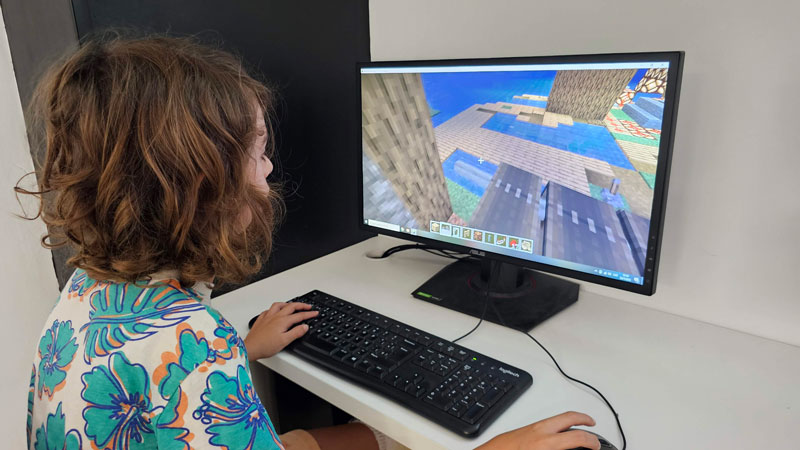In a world where children grow up surrounded by screens, video games are no longer just a pastime—they are a new way to learn. Among the most popular games for kids, Minecraft and Roblox have become genuine digital laboratories where young players develop creativity, logic, and computational thinking almost without realizing it.
These aren’t just two video games: Minecraft and Roblox are real gateways into the world of programming, the language of the future, which no longer belongs solely to engineers but to any child or adult curious enough to create.
Playing is learning (if you know how)
For years, video games had a bad reputation: “they’re distracting,” “they isolate kids,” “they don’t offer any educational value.” But reality has changed. Today, game-based learning is one of the most effective methods for teaching digital skills and logical thinking.
When a child plays, their attention and motivation skyrocket. While playing, they are solving challenges, designing strategies, and learning from mistakes in real time. And that is exactly what professional programmers do.
Minecraft: the infinite world where logic is born
Minecraft is much more than a game about blocks. It is a space of limitless creativity where children can build worlds, automate mechanisms, and learn to think like engineers.
Through platforms such as Minecraft Education Edition or advanced environments created with mods, plugins, and custom servers, students can explore programming concepts using MakeCode, JavaScript, Java, or Python. They face real challenges, from programming a virtual agent to designing automated systems within the game itself.
What may seem like simply “placing blocks” is actually computational thinking in action:
─ Breaking down problems: How can I make this bridge open automatically?
─ Creating logical sequences: If A happens, then B follows
─ Debugging errors: When something doesn’t work, investigate why
In this way, without fear or pressure, children become familiar with the mental framework of programming. And the best part? They have fun while doing it.
Roblox: from players to creators
While Minecraft particularly encourages construction, Roblox fosters a creator mindset. Its platform allows young users to design their own games, characters, and virtual worlds using Lua, a simple but powerful programming language.
Every time a child codes a mini-game or customizes a mechanic, they are learning the fundamentals of software development: variables, loops, conditionals, events. And they do it in a natural and engaging environment. Roblox teaches—and almost unconsciously instills—the “maker mindset”: the mentality of those who do not just consume technology, but also create it.
Skills beyond the screen
Learning to code through video games isn’t just about writing lines of code. It’s a way to cultivate skills that will be crucial in both the professional and personal lives of young people:
─ Creativity: transforming an idea into a digital experience
─ Logical thinking: learning to structure complex problems
─ Teamwork: many Minecraft and Roblox challenges are collaborative
─ Resilience: trial and error becomes a natural part of learning
In an increasingly automated world, knowing how to code is no longer optional—it’s a new universal language. And the sooner children learn this language, the better they will master it.
From screen to classroom: unlocking the potential
At Codelearn, we integrate Minecraft and Roblox strategically: we don’t use them merely as games, but as complementary educational tools within our curriculum. The secret is guiding students with a methodology that combines:
─ Playful learning to maintain motivation
─ Real-world challenges to apply programming concepts
─ Teacher support to turn every mistake into a lesson
This way, video games shift from passive entertainment to platforms for active learning.
Minecraft and Roblox are proving that programming can be as fun as playing. Children can move from being consumers of technology to creators of their own digital worlds. And 21st-century education is not about memorizing—it’s about imagining, experimenting, and building. Every block placed or line of code written teaches young people something bigger than programming: it teaches them how to think.
If you are a parent or educator, it’s time to ask yourself: what if the video game your child loves most is also a gateway to their future career? For many of our students, these two games have been key to discovering what has become the extracurricular activity of a lifetime.
Teaching programming gives children the tools to understand the future, create it, and lead it.

